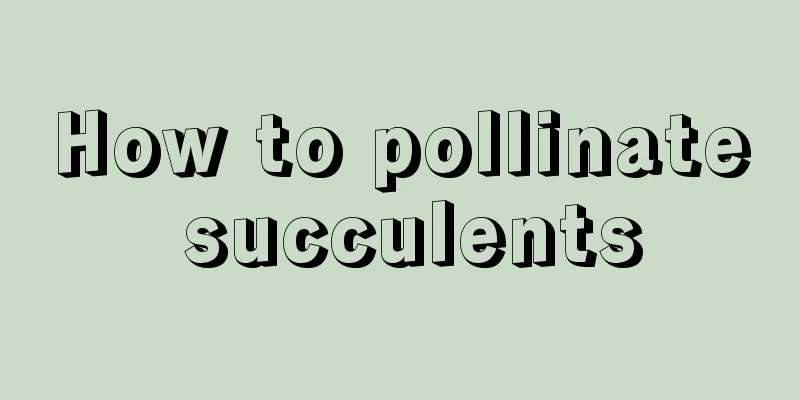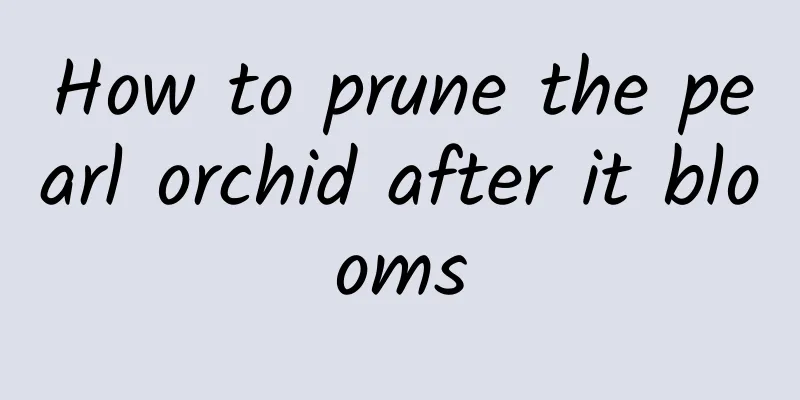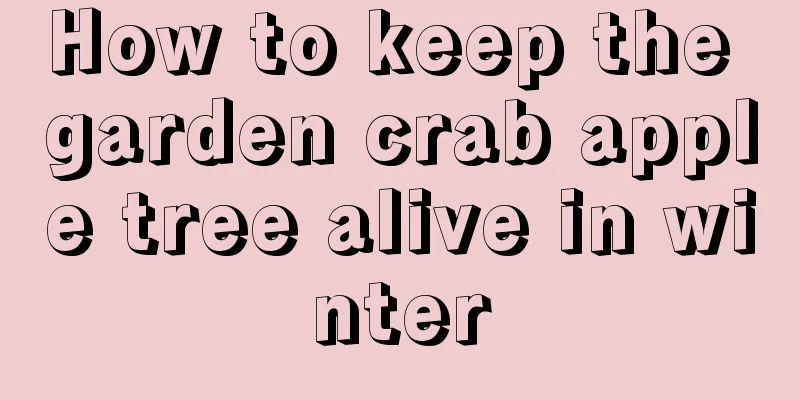How to pollinate succulents

1. Preparation before pollinationFirst, select two flower buds that bloom almost at the same time, and be careful to distinguish between stamens and pistils. The part where it spits out small dewdrops is the stigma of the pistil, through which the pollen is transported to the ovary to complete the pollination process. On the second or third day after the bud is fully open, small dewdrops will appear on the stigma, just like the sap has burst. It is best to pollinate at this time. Pollination too early or too late will result in pollination failure. The yellow exploding heads on the outer circle of the flower are stamens. You must wait until they explode before collecting pollen. 2. Pollination stepsSome flowers have relatively small openings. In order to facilitate pollination, the sepals and petals on the outside of the flower need to be cut off. At the same time, in order to prevent its own pollen from being transferred to its own stigma, the stamens also need to be cut off and put aside for later use. Without the obstruction of sepals, the success rate of pollination is greatly improved, and impurities on the calyx will not affect the collection of seeds. Most succulents cannot self-pollinate, so the stamens cut from the two flowers should be numbered to prevent confusion. Stamen No. 1 pollinates style No. 2, and stamen No. 2 pollinates style No. 1. Wipe the cut stamen No. 1 on the stigma of flower No. 2, so that the pollen is evenly covered on it until the presence of pollen can be clearly seen. If there is honey on the stigma, remove the honey before pollination. After completing these steps, the pollination process is basically completed. 3. Wait for the seeds to matureAfter pollination, all you can do is wait for the seeds to mature. After successful pollination, the seed pod will slowly crack as it matures, and the seeds will be exposed to a certain extent. When the time comes, they will fall off naturally. You can place a box under the seed pod to collect the fallen seeds. |
<<: What kind of soil is good for growing lucky bamboo?
Recommend
Are the fortune tree and the lucky tree the same? What is the difference?
The money tree and the lucky tree are different. ...
Ruyi breeding methods and precautions
1. Breeding methods 1. Light: It prefers light an...
How to water Mo Lan in summer
1. Watering frequency The branches and leaves of ...
When and how to plant pumpkin
Northern melon planting time Beigua can be plante...
Can carbendazim be used to water anthurium?
Can Anthurium be watered with carbendazim General...
How to prune a walnut tree
When to prune walnut trees Generally, the best ti...
What are the cultivation methods and precautions of golden orange?
Introduction of Golden Money Golden money orange,...
What Chinese medicinal herbs have high economic benefits (what Chinese medicinal herbs have good prospects for planting now)
In some mountainous areas, wild Chinese medicinal...
Asparagus seedling raising method and time
Asparagus is known as the "king of vegetable...
Ivy cultivation methods and precautions
1. Maintenance methods 1. Temperature: The temper...
When do hydrangeas bloom?
1. Flowering time The flowering time of hydrangea...
How to prune jasmine so that it blooms and fills the pot?
Jasmine is deeply loved by people for its fragran...
How to deal with the leggy growth of Oxalis
Treatment of Oxalis superfluous growth - suppleme...
How to prune hibiscus
How to trim time Hibiscus is a fast growing plant...
What is the best fertilizer for eggplant?
Eggplant fertilization time 1. Eggplants need a l...









